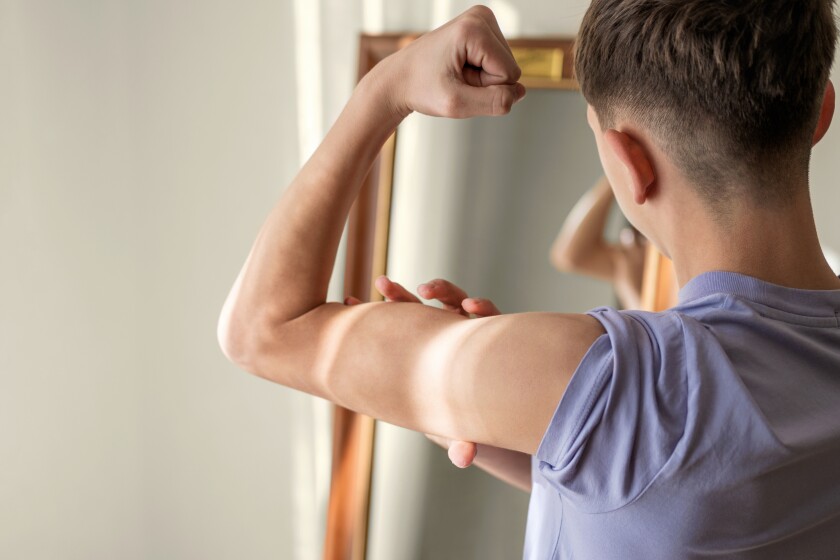UPDATE: New reports reveal a troubling rise in body dysmorphic disorder (BDD) among men, with experts warning that social media is fueling the crisis. Historically focused on women, the conversation around body image is shifting, and the urgency to address male mental health is growing.
The struggle with BDD manifests through harmful thoughts, including messages like, “You’re overweight,” or “You need to work out instead.” These thoughts are relentless for many men, leading to dangerous behaviors. Official studies, including a recent piece from Harvard Medical School, stress that young men are increasingly turning to unsafe supplements and extreme dieting practices, with dire consequences for their mental health.
Carter Sherwin, a voice within this crucial conversation, emphasizes the need for men to openly discuss body image issues. He notes that the stigma surrounding these discussions often leads men to feel weak or vulnerable, which exacerbates the problem. “Striving to be healthy is not bad, but obsessing about your body to extremes is,” Sherwin asserts.
The impact of toxic social media culture cannot be underestimated. Influencers like Andrew Tate perpetuate harmful narratives, often belittling their audience. Sherwin advocates for a shift towards more positive role models in fitness, highlighting figures like Noel Deyzel, who promotes confidence and self-acceptance regardless of fitness levels. “We need more Noel Deyzels and fewer Andrew Tates,” Sherwin insists.
As the conversation around male body image gains momentum, it’s crucial to recognize the human impact of BDD. Men are experiencing not just physical but emotional turmoil, with some facing severe depression and suicidal thoughts as they grapple with these societal pressures. The urgency for change is real, and encouraging open dialogues could be a vital step towards healing.
Authorities and mental health professionals are calling for increased awareness and support for men struggling with BDD. The growing recognition of this issue is essential, as it affects countless individuals and their relationships. If society can shift its narrative and approach to body image, it might help alleviate the suffering of many men.
Moving forward, the focus must be on creating safe spaces for men to discuss their experiences and challenges. Initiatives that promote mental health awareness and body positivity can foster a healthier dialogue around masculinity and self-image.
As we confront this male body-imaging epidemic, it’s clear that we cannot ignore the urgent need for systemic change. The conversation around body dysmorphic disorder among men is just beginning, and it’s one that deserves immediate attention.
The time for action is now. By amplifying positive messages and encouraging men to speak out, we can begin to dismantle the harmful standards that contribute to BDD. The stakes are high, and the need for collective understanding and support has never been more pressing.
